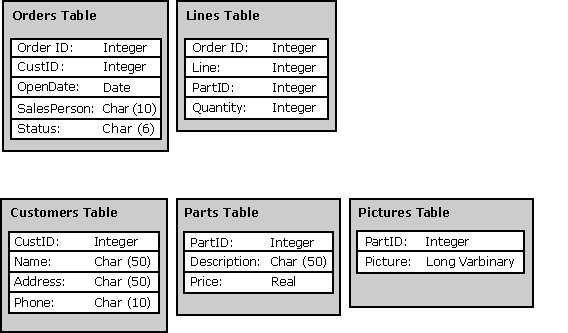Events
Mar 31, 11 PM - Apr 2, 11 PM
The biggest SQL, Fabric and Power BI learning event. March 31 – April 2. Use code FABINSIDER to save $400.
Register todayThis browser is no longer supported.
Upgrade to Microsoft Edge to take advantage of the latest features, security updates, and technical support.
All databases have a structure that outlines how data will be stored in the database. For example, a simple sales order database might have the structure shown in the following illustration, in which the ID columns are used to link the tables.

This structure, along with other information such as privileges, is stored in a set of system tables called the database's catalog, which is also known as a data dictionary.
An application can discover this structure through calls to the catalog functions. The catalog functions return information in result sets and are usually implemented through SELECT statements against the tables in the catalog. For example, an application might request a result set containing information about all the tables on the system or all the columns in a particular table.
This section contains the following topics.
Events
Mar 31, 11 PM - Apr 2, 11 PM
The biggest SQL, Fabric and Power BI learning event. March 31 – April 2. Use code FABINSIDER to save $400.
Register todayTraining
Module
Use system catalogs and system views in PostgreSQL - Training
Relational databases can store vast quantities of data, but they also need to hold information about the structure of that data. For an operational database management system (DBMS) information about the structure of tables, and all other objects, security, and concurrency, amongst many other settings and metrics, is required. This information is know as metadata and is stored in system catalogs in Azure Database for PostgreSQL. In addition to directly accessing system catalogs, you can access system views
Certification
Microsoft Certified: Azure Data Fundamentals - Certifications
Demonstrate foundational knowledge of core data concepts related to Microsoft Azure data services.